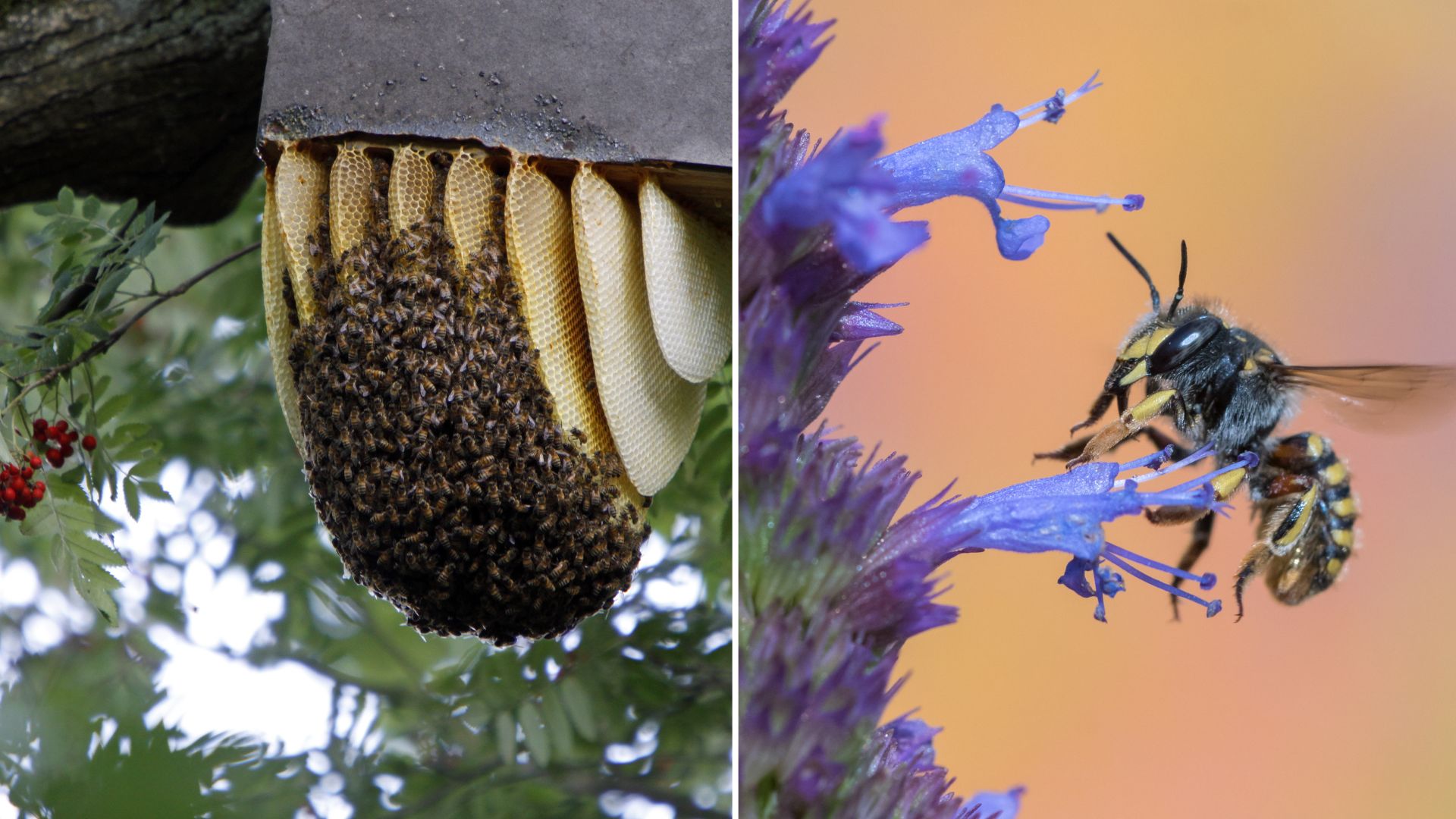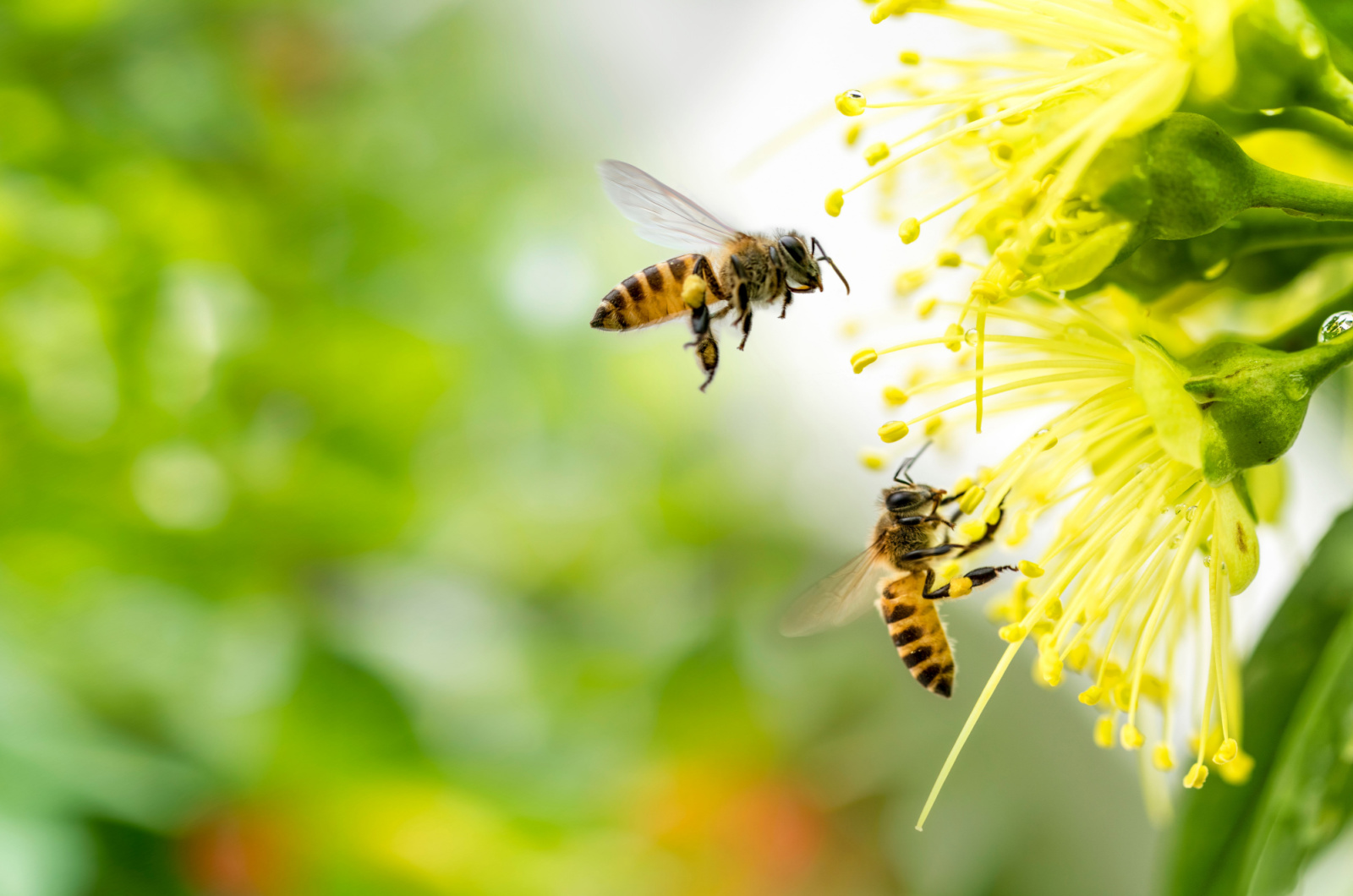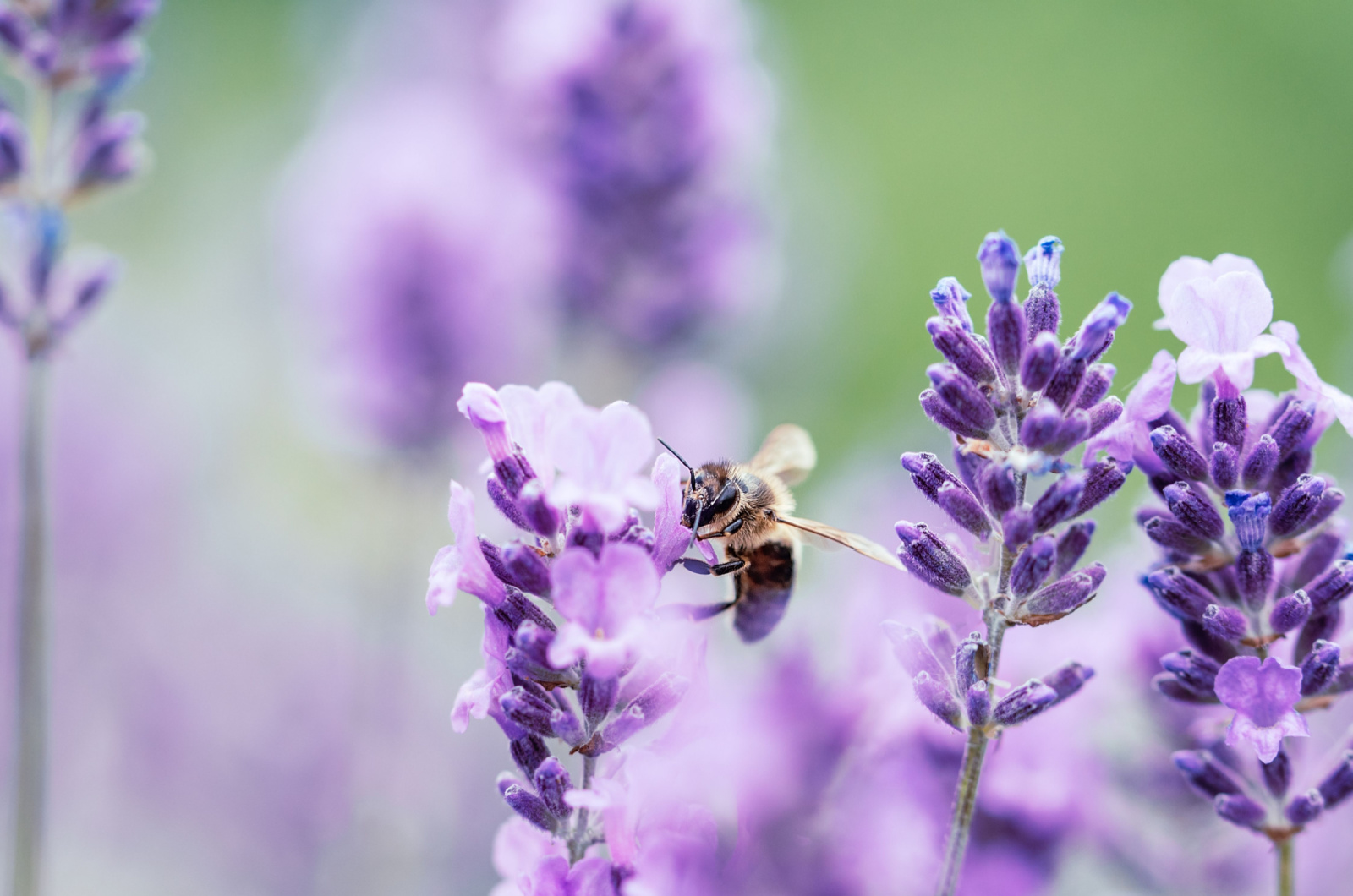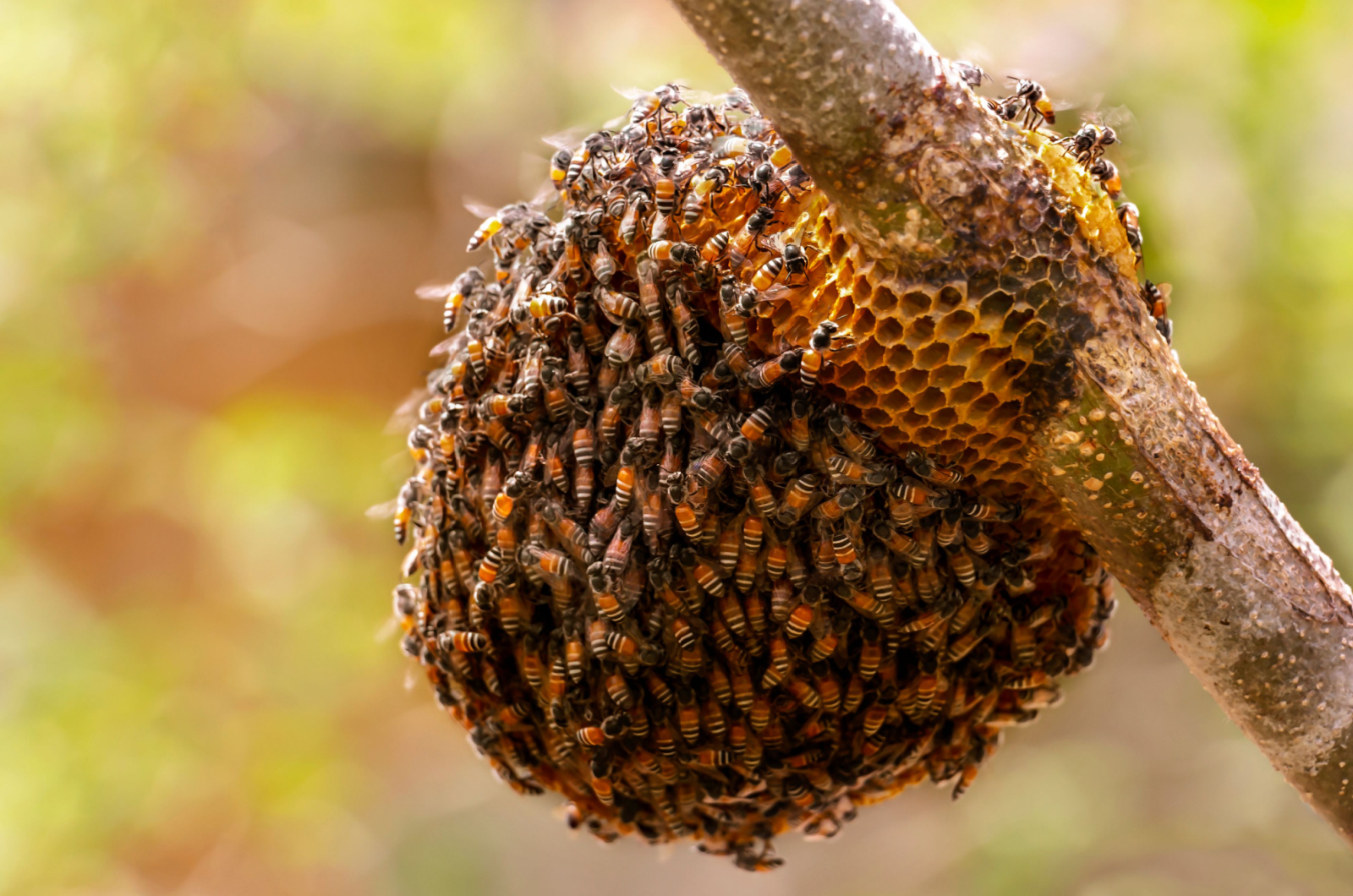The importance of bees has been the main topic of debate for the last couple of years and the main reason is that the population of these insects has significantly decreased.
But do you know the difference between wild and domestic bee species? I’m sure you’ve heard that wild bees don’t produce honey, but is that everything we know about them?
The studies of the ecologist Rachel Winfree were centered around bees and 25 years ago, she discovered something that surprised her like nothing before. She saw a plasterer bee in the Pine Barrens located in New Jersey.
The main problem was that this bee species was thought to be extinct since no one had seen it for 50 years!
But, the journey ahead is far from simple. When Winfree shared her miraculous findings with state wildlife officials, the response was unexpected and disappointing.
Despite the monumental rediscovery, limited resources dampened the drive for further research, casting a shadow over the fate of these precious insects.
So, let’s take a moment and consider: do we really need wild bees? Well, the answer echoes throughout entire ecosystems: we desperately need these uncelebrated pollination heroes!
In this article, I’ll tell you the reasons why we shouldn’t neglect these species and describe the role gardeners have in this entire process. Their hands possess the potential to revive these vital pollinators!
Let’s get started!
The Main Issue
It’s not uncommon for scientists who study native bee species to be rejected and ignored after they ask authorities for help, even though these insects are in serious danger.
Meanwhile, the amount of research on the importance of bees as pollinators for plants is increasing significantly.
The executive director of the Xerces Society, Scott Black, explained that bees aren’t only responsible for the pollination of natural systems but they’re also responsible for the pollination of many agricultural crops. (1)
One of the main misconceptions regarding bees is that the public believes that only domestic bee species matter when it comes to pollination, especially for agricultural crops.
Everyone seems to be concerned about the population of domestic bees but the main problem is that it pushes the importance of wild bees aside.
Entomologist Hollis Woodard stated that not enough people can differentiate between wild and domestic species, which results in even bigger issues. (2)
Black stated that domestic bees are in danger because of increased usage of pesticides, lack of nutrients, and pathogens. However, he added that they aren’t at risk of dying out and that the number of honeybees is higher than ever.
But when it comes to wild bees, Black says that the situation is different. According to him, this isn’t an issue for bees only.
Researchers claim that the strategy of relying on honeybees as the main pollinators isn’t good and all native species are actually essential for a thriving ecosystem.
The good news is that scientists and policymakers are becoming more aware of the situation and studies have confirmed that farmers and land managers can aid in creating a diverse and flourishing bee community.
What Are The Benefits Of Bees?
The main difference between honey bees and wild bees is that the first ones form hives whereas the latter are solitary. The only exception are bumblebees because they form colonies.
When it comes to the number of wild bee species, about 20,000 exist in the world and the USA and Canada have 4,000. (3)
If we take a look at the benefits of these insects, the first one to mention is the pollination of more than 80% of flowering plant species. Plant blossoms act as reproductive organs and once bees visit them, they’ll feed on the nectar and pollen.
After they finish their lunch, they’ll transport the pollen from one plant to another. This will result in flower fertilization and finally, fruit and seeds will develop.
Black emphasizes the importance of native bees by saying that without them, we can’t have flowering ecosystems in California or resistant meadows in the mountains of Colorado.
If we take a look at the agricultural fields all around the globe, these insects are responsible for the pollination of three-quarters of crop plants. You should know that common crops, such as wheat and corn, are pollinated by wind.
In 2013, a study was conducted on 27 crop species, including almonds, blueberries, and coffee found across 600 fields worldwide to determine the rate at which flowers develop into fruit when pollinated by wild insects. The results showed the rate was significantly increased. (4)
Those fields that had fewer wild pollinators didn’t have as good a fruit yield as the ones that included a higher number of wild insects. Therefore, the researchers came to the conclusion that pollination responsible for the yield can’t depend on honeybees only.
Food Dependence On Pollinator Insects
To understand the importance of pollinator insects when it comes to food crops, take a look at the table below that shows examples of crops and their dependency on pollinators shown in percentages.
| Crops that completely depend on pollinators The yield decreases by about 90% if there aren’t pollinators. | Melons, pumpkins, watermelons, kiwis, cocoa beans |
| Crops that highly depend on pollinators The yield reduces by 40-60% in the absence of pollinators | Apricots, blueberries, peaches, plums, mangoes, apples, cashew nuts, almonds, avocados |
| Crops with moderate dependency The yield reduces by 10-40% if there aren’t pollinators. | Sesame, mustard seed oils, sunflower seeds, rapeseed, figs, strawberries, gooseberries, eggplants, currants |
| Crops with little dependency The yield reduces by 0-10% in the absence of pollinators. | Lemons, oranges, papayas, tomatoes, limes, poppy seeds, safflower seeds oils, peanuts, palm |
| Crops with no dependency Yield isn’t affected if there aren’t any pollinators. | Maize, barley, oats, rye, rice sorghum, carrots, sweet potatoes, potatoes, cassava, peas, chickpeas, lentils |
According to the research conducted in 2020 regarding the economic effect of wild bees, these insects brought over $1.5 million in annual production of seven crops, such as apples and pumpkins. (5)
Similar results were found in 2015 in research that included wild and managed bee pollination for 20 crops found across 1,400 fields. (6)
We need to understand that wild bees, such as bumblebees, are better pollinators than honeybees for some crops, such as blueberries, tomatoes, and cranberries.
Entomologist Sydney Cameron states that the blossoms of the abovementioned plants must be shaken with a precise frequency in order to release pollen. (7)
Once the insect visits the blossom, its flight muscles isolate from the wings and in that way enable the muscles to vibrate their thorax while the wings remain stationary. According to Cameron, this feature makes wild bees the best pollinators for these plant species.
Surprisingly, some uncommon and rare bee species can also play a major role in pollination of certain crops.
The analysis of 72 wildflower and agricultural sites in 2022 has shown that rare bees increased pollination in specific areas in New Jersey and Pennsylvania by up to 86%. (8) So, wild species take over the role of pollinators when there aren’t enough common species.
Rachel Winfree was one of the co-authors and she stated that there are some areas where the population of honeybees or bumblebees is low and that other species must step in.
Bee populations may also be affected by environmental changes; for instance, they can be forced to stay in their hives due to strong winds in California almond orchards. (9)
Well, there are numerous benefits of native bee species but their number is getting lower and according to conservation biologist Claire Kremen, they’re in severe danger.
Scientists compared the population of bee species from the 1990s with the data obtained from 2006-2015 and concluded that there has been a decline in the population by about a quarter.
Unfortunately, this decrease in the number of these pollinators led to fewer fruits in some species, such as cherries, apples, and blueberries.
Future Plans
There are various causes of the population decline in native bees, such as the loss of habitat, diseases, and overuse of pesticides. Black also added that climate change and the aggressive spreading of invasive plants contributed to their decline.
Another danger for native bees are diseases that can easily be transmitted by both honeybees and managed bees. Additionally, all these species may compete for food.
However, Kremen reminds us that we shouldn’t give up on managed bees. According to her, we should focus on preserving all species. She states that wild bees and native bees can actually cooperate because pollination will be more effective for some crops.
One of the major problems in the agricultural world is that a single fruit or vegetable species is grown in one field. It leads to loss of habitat for certain insects and increased usage of pesticides.
Unfortunately, this strategy causes a lack of food for insects and severely affects their health. (10) When compared to domestic bees whose diet is supplemented by sugar water, wild bees need various plants to feed on.
Growing plants that attract bees is one of the possible solutions for this issue. We should start with small steps and the effort will most certainly pay off.
Xerces Society conducted research in February 2023 and their findings suggest that about 1 million acres of pollinator habitat can be added to California’s Central Valley by planting native species. (11)
Planting wildflowers can also help bees become more resistant to pesticide exposure.
Ecologist Will Glenny claims that public land management can affect bees. For example, herds of cattle may steal food from wild bees and fire can decrease the number of flowering plants, which immediately means less food for pollinators.
It’s crucial to understand these interactions and the importance of supporting diverse bee species. Another essential step is monitoring wild bee species; we lack data on solitary bees because they find shelter in hidden spots, such as leaf piles.
The data should also provide us with information on bee species that are doing just fine and those that are in decline. This way, the plans on preserving endangered species would be easier to make.
The good news is that there have been some changes when it comes to laws related to endangered species. California courts decided that wild bees have the right to be included in the state’s Endangered Species Act.
Planting pollinator habitats will also be funded as stated in the Infrastructure Investment and Jobs Act passed in 2022.
You should know that legislative changes do play a major role in preserving wild bees but we as individuals can contribute significantly. So grab your gardening gloves and make a pollinator-friendly garden filled with native plant species!
References
1. An overview of the potential impacts of honey bees to native bees, plant communities, and ecosystems in wild landscapes | Xerces Society. (n.d.)
2. Woodard et al., (2020). Towards a U.S. national program for monitoring native bees. Biological Conservation
3. How many species of native bees are in the United States? | U.S. Geological Survey. (2023, June 20).
4. Lucas A. Garibaldi et al. (2013) Wild Pollinators Enhance Fruit Set of Crops Regardless of Honey Bee Abundance. Science
5. J. R. Reilly et al. (2020). Crop production in the USA is frequently limited by a lack of pollinators. Proc. R. Soc. B.
6. Kleijn, D. et al. (2015). Delivery of crop pollination services is an insufficient argument for wild pollinator conservation. Nature Communications
7. Cameron, S. A., & Sadd, B. M. (2020). Global trends in Bumble Bee health. Annual Review of Entomology
8. Genung, M. A., Reilly, J., Williams, N. M., Buderi, A., Gardner, J., & Winfree, R. (2023). Rare and declining bee species are key to consistent pollination of wildflowers and crops across large spatial scales. Ecology
9. Brittain, C., Kremen, C., & Klein, M. (2013). Biodiversity buffers pollination from changes in environmental conditions. Global Change Biology
10. Pain, S. (2017). The whole food diet for bees. Knowable Magazine
11. Dilts, T. E., Black, S. H., Hoyle, S. M., Jepsen, S., May, E. A., & Forister, M. L. (2023). Agricultural margins could enhance landscape connectivity for pollinating insects across the Central Valley of California, U.S.A. PLOS ONE




